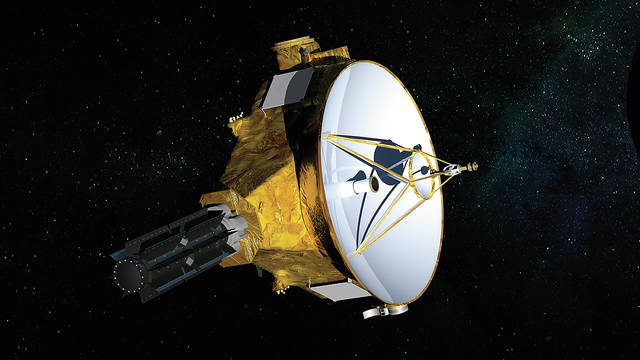LAUREL, Md. — The NASA spacecraft that yielded the first close-up views of Pluto hurtled toward a New Year’s rendezvous with a tiny, icy world a billion miles farther out, in what would make it the most distant cosmic body ever explored by humankind.
New Horizons was on course to fly past the mysterious, primitive object nicknamed Ultima Thule at 7:33 p.m. HST Monday. The close encounter comes 3 1/2 years after the probe’s swing past Pluto, which until now was the farthest object visited by a spacecraft from Earth.
This time, the drama was set to unfold more than 4 billion miles from Earth, so far away that it will be 10 hours before flight controllers find out whether the spacecraft survived the flyby.
A few black-and-white pictures might be available within an hour or two of that official confirmation, but the highly anticipated close-up shots won’t be ready until later today or Wednesday, in color, it is hoped.
“Today is the day we explore worlds farther than ever in history!! EVER,” tweeted lead scientist Alan Stern.
Stern said Monday from Mission Control at Johns Hopkins University’s Applied Physics Laboratory in Laurel that the team has worked years for this moment and now, “It’s happening!!”
He called it an auspicious beginning to 2019, which will celebrate the 50th anniversary of Neil Armstrong and Buzz Aldrin’s footsteps on the moon in July 1969. Just a week ago, NASA marked the golden anniversary of Apollo 8, astronauts’ first flight to the moon.
“Ultima Thule is 17,000 times as far away as the ‘giant leap’ of Apollo’s lunar missions. The exploration at Ultima Thule is a fitting way to honor the brash exploration and boldness that was Apollo,” Stern wrote in an opinion piece in The New York Times.
New Horizons — the size of a baby grand piano — was expected to hurtle to within 2,200 miles of Ultima Thule, considerably closer than the Pluto encounter of 2015.
Its seven science instruments were to continue collecting data for four hours after the flyby. Then the spacecraft was to turn briefly toward Earth to transmit word of success. Radio signals take over six hours to cover the distance to Earth.
Scientists believe there should be no rings or moons around Ultima Thule that might endanger New Horizons. At a speed of 31,500 mph, New Horizons could easily be knocked out by a rice-sized particle.
The risk added to the excitement.
Queen guitarist Brian May, who also happens to be an astrophysicist, joined the team at Johns Hopkins with planned to present around midnight EST the cosmic premiere of a music composition he wrote in honor of the big event.



